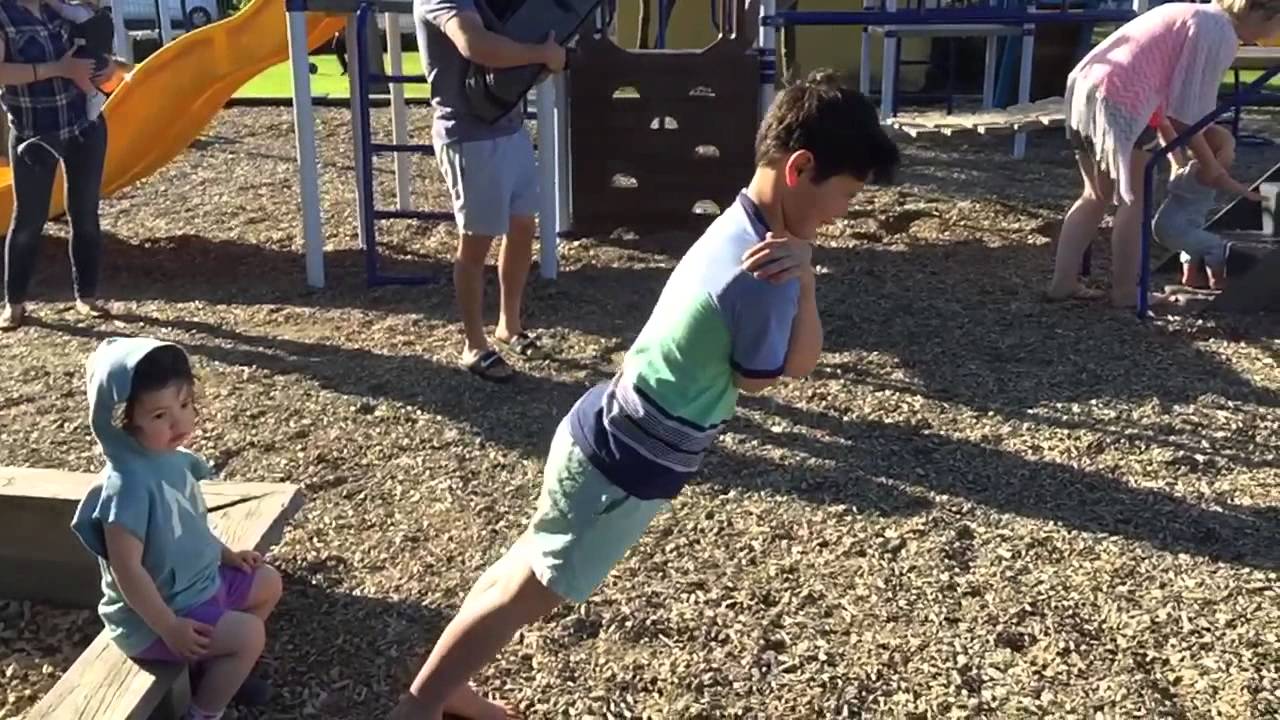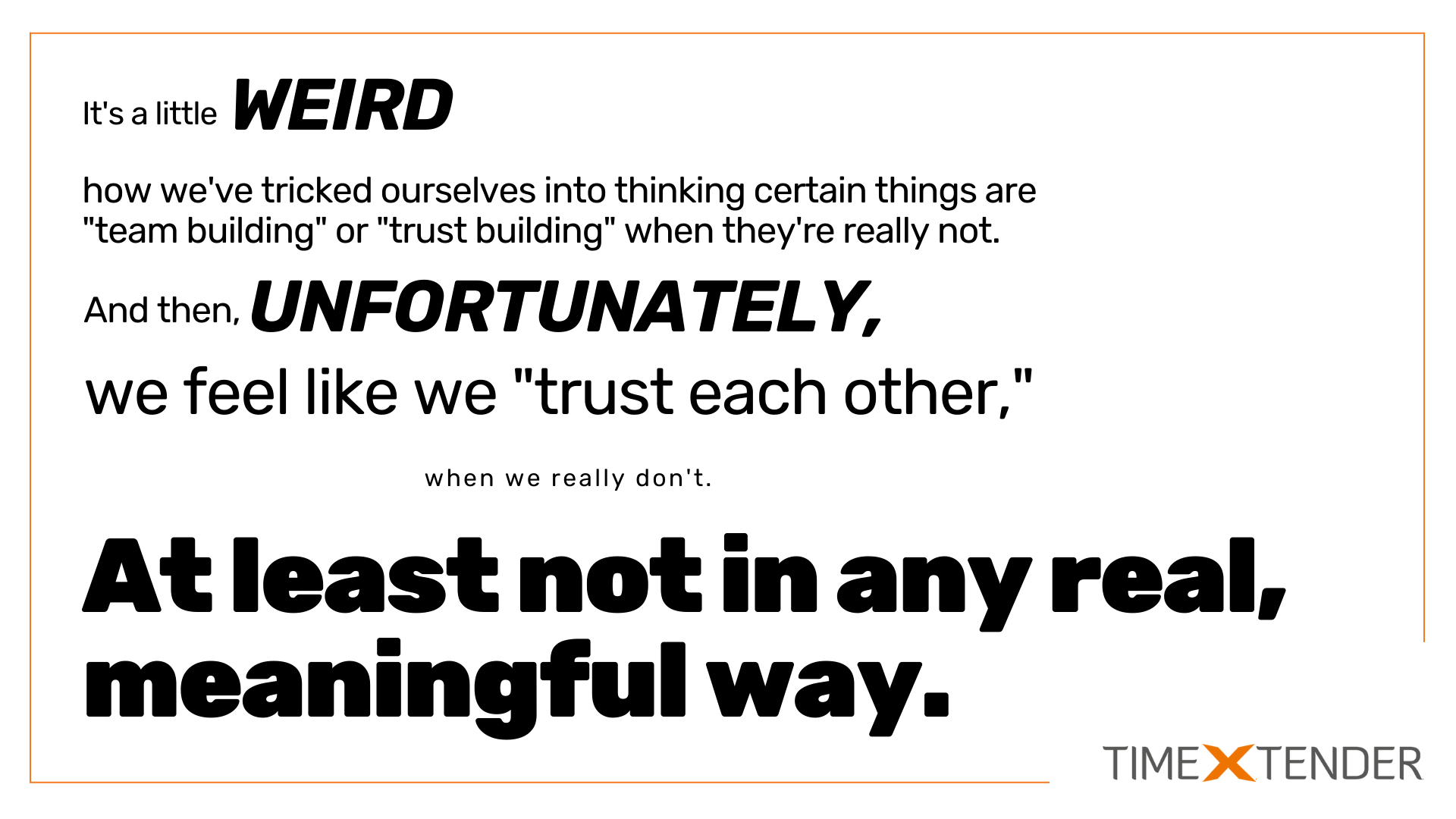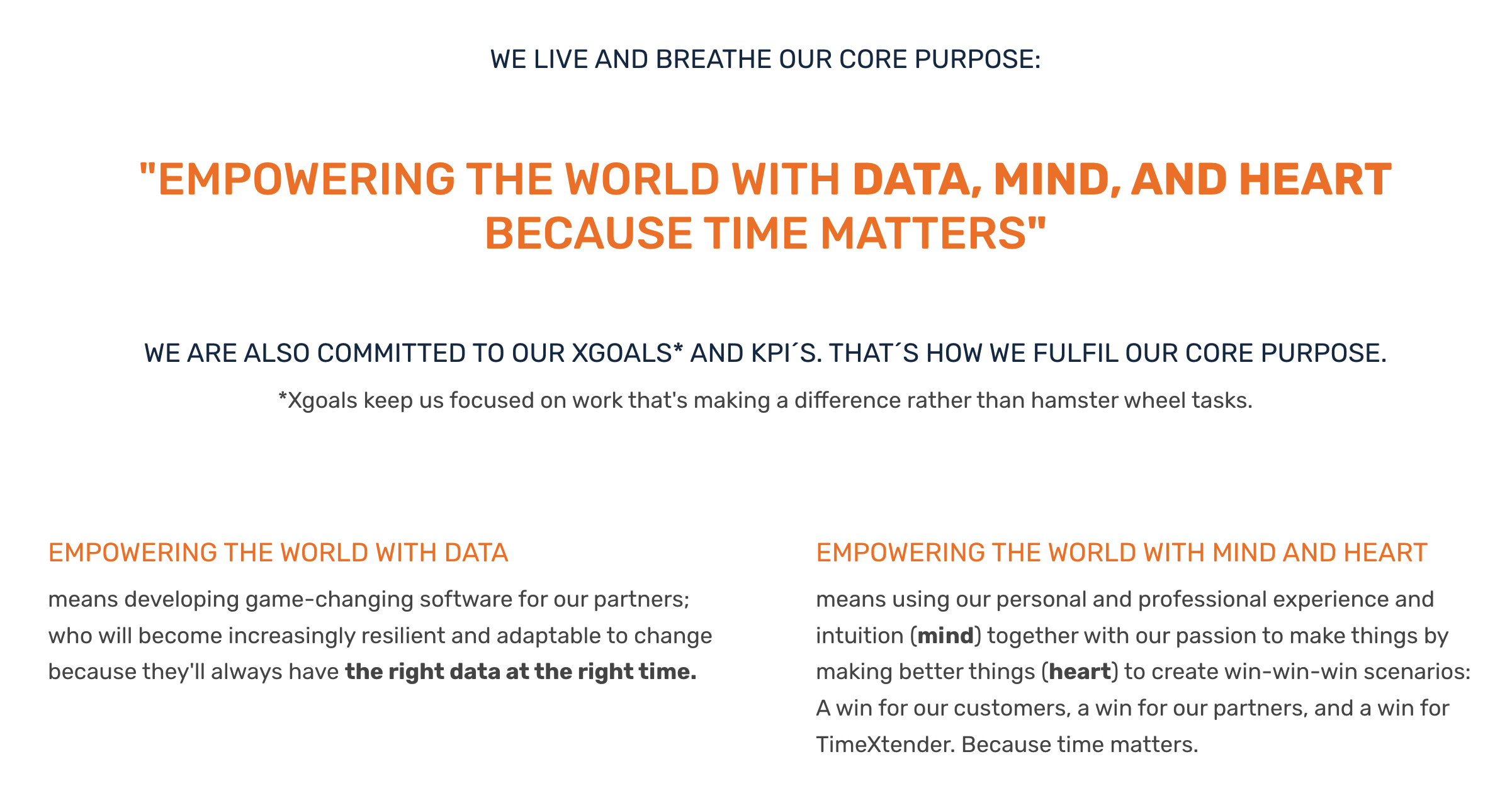11 min read
Want to Build A Creative Culture? Take These 6 Steps Today
Written by: Matt Monge - July 18, 2022

Businesses and business leaders talk a good game about wanting to build a creative culture. But it’s a totally different thing when it comes to actually having to plug in creativity and innovation, right?
You know what I'm talking about. It's like all "the other guys'" corporate executives went to the same conference where they competed in the same corporate buzzword bingo tournament or something.
We want to develop, deploy, and manage a *truly* (well thank god they're being truthful) creative suite of products to help our customers leap tall buildings in a single bound...

It’s one of those things where, in reality, there’s often a pretty significant disconnect between what companies say, and what companies do.
There are several reasons for that, some of which will become pretty clear as we go along here today; but what you should know right from the jump is this: you, as an individual can absolutely be more creative, and you, as a team or organization, can absolutely be more creative.
It is, as with anything, a matter of you—as an individual or organization—being very real about who you are and intentional about taking the steps necessary to become who you want to become.
Here are a few of those steps.
Build Creative Culture by Building Trust Based on Humanness, Not Predictability
Wait, wait, WAIT! First, what I don't mean.
When I say "build trust," I do NOT mean this...
We've all been there, am I right...
Or this...

image credit: Trust Fall Fails
So take a deep breath.
I'm not about to suggest that you and your team hop in a van, drive out to the woods, gather around some platform, watch in solemn silence as one of you steps onto the platform while the rest of you gather around the platform with arms extended upward and—
Hold on. Just to be clear, are we talking about a team building thing right now?
Or are we talking about the prelude to some sort of bizarro human sacrifice...
I kid, I kid.
You gather around, hold out your arms, and someone does a trust fall! Right?

Orrrrr....not.

Just saying. It's all a little weird when you stop and think about it. 😜😂*

The point is this. We've got to be very thoughtful about how we define trust, lest we unintentionally trick ourselves into thinking certain things are "team building" or "trust building" when they're really not. Because if we do that, we also run the risk of feeling like we, as teams, "trust each other," when we really don't. At least not in any real, meaningful way.

*Quick note here on trust falls, etc.: None of this is to say there's any ill-intent on anyone's part, mind you.
Folks who run trust fall exercises are doing so to help people have a good time together, and that's all well and good. Teams who go do that together get bonus points for taking the step of attempting to build those bonds. Most teams don't take that step.
Real-deal trust—the kind you need when you're working together on a team—isn't built that way because it's not that kind of trust. It's not a trust based on being able to predict what someone's going to do.
Rather, real trust is a trust based on mutual humanness.
It's what leadership and organizational health expert Pat Lencioni calls vulnerability-based trust. It's what Brene Brown would likely relate to both vulnerability and imperfection. Check out what Brown says here for Inc. Magazine about the connection between vulnerability, courage, and not only work, but also life:
I hope you caught her reference above to 13,000-some data points. I mention research and data so you understand that this isn't some random, abstract feeling that I or others have about humans or teams work. This isn't something I concocted after seeing a vision during the middle of the night whilst being up ill after eating some bad tacos.
Nope. This is real-deal stuff that will revolutionize how you work, how you lead, and how your team functions and performs.
Without it, teams are doomed to suffer from things like high levels of interpersonal conflict, high levels of politics, low morale, and so on.

#sarcasm
Why? Because they don't trust each other enough—and in the right way—to deal with any of it.
If you want to build trust on a team, it starts with teammates understanding the following:
What You Must Understand About Humanness & Perfection
1. To be human is to be many things, and one of them is imperfect.
2. Why them being imperfect is good.
3. Their teammates are also imperfect.
4. Since we all are, there's no sense hiding our imperfections. Rather, take a more open, proactive approach
Then, once you and your teammates are on the same page about the above, you can move on to things like the below.
How to Be More Human and Build Real Trust
1. Remind each other that you're unique, imperfect human beings.
2. As such, you're going to make mistakes, and you're also going to bring unique strengths to both the team as a whole as well as specific situations.
3. Take the initiative to admit you don't know something and ask for help.
• Did you know there's actually research that shows a correlation between higher levels of creativity within work groups when people within those groups have as a habit "help-seeking behaviors"?
• What does that tell us? It tells us that—in more ways than one—asking for and offering help is a strength within an individual and a team, not a weakness.
4. Make it easy for others to ask you for help; be a great teacher.
5. Take the initiative to offer apologies when you mess up.
6. Make it easy for others to apologize; offer forgiveness freely.
7. Regularly point out when someone else is better than you are at something.
8. Regularly offer help to others.
9. Assume positive intent.
10. Take the initiative to talk with a teammate when something feels off.
Fact is, we're all human beings with emotions, needs, baggage, and quirks; and none of that goes away when we step into—or log into—the office every day.
Organizations that can make work more human will be the ones who are ultimately successful in uncovering the creativity that's been hounded into hiding by the heavy hand of compassionless corporate overlords over the years.
[By the way, there's more we could talk about here in regards to humanizing a workplace. Things like human beings' shared need of purpose being something that enables teams and organizations to rally together around their shared reason for being, and so on.
Build a Creative Culture by Increasing Individual Autonomy
According to research, one of the greatest contributors to individuals both feeling like they can create and having the ability to do so is autonomy.
And lest we leave autonomy as some fuzzily-defined word, the same journal article I just cited above defines it simply as "the freedom of an individual in how to carry out their job."
Now this goes beyond the suggestions you often hear about, like flexible hours and unlimited PTO, though we have those benefits at TimeXtender and have been recently recognized for our culture.
Those of us within leadership roles have a special opportunity to have an impact in this regard, both on an individual level, as well as when it comes to creating a culture within which our teams and teammates are enabled and empowered to function with increasing levels of autonomy.
 Robert Greenleaf, one of the earliest advocates for "modern" servant leadership, once said the following in an attempt to push those in leadership roles to analyze the effect(s) their leadership was having:
Robert Greenleaf, one of the earliest advocates for "modern" servant leadership, once said the following in an attempt to push those in leadership roles to analyze the effect(s) their leadership was having:
"Do those served grow as persons? Do they, while being served, become healthier, wiser, freer, more autonomous, more likely themselves to become servants? And, what is the effect on the least privileged in society? Will they benefit?" (Greenleaf, Servant Leadership)
His point was that one of the main, overarching goals of leadership was that it was a vehicle for the service of others, and one of the aims of that service was aiding people in becoming more free, autonomous, and whole human beings.
That may seem too out there, but I can assure you, it's not. In fact, a team of people who are growing increasingly wise, are autonomous in their roles, and are interested in serving their teammates and customers—that team is very likely going to outperform a similarly situated team without those attributes because that second team is going to be struggling with things like poor decision-making, little or no growth, high levels of interpersonal conflict, high levels of politics, low morale, etc. But more on those things later.
build a Creative Culture By Developing a Happy One
Here's where some of you are getting ready to click off the page.
I wish you wouldn't, and here's why.
First, that doesn't say HIPPY culture; it says happy culture. Though, to be sure, some of you may mentally equate one with the other.

It's OK. You're not alone and I'm not offended. :) Friends?
Second, before you write off happiness as having anything to do with business, I'd ask you to do me a favor and hold on a second. I would hope that by now I've demonstrated that I'm not just pulling these ideas from just any handy bodily orifice.
Further, I'm not some lazy schmo trying to convince you that all offices and/or workplaces should just be filled with beanbag chairs and ping-pong tables (not that there's anything wrong with that), and that people today should just, you know, be able to float through their days and work on...I don't know, whatever...whenever...just as long as no one's late—or at least super gnarly late—for group massage therapy at 4:00 this afternoon. But if they are, that's cool, too; because, you know, whatever.

Hopefully, you've noticed that I tend to cite research and/or expert opinion when I write.

Doesn't mean I don't like to have a good time at the same time (who says a well-supported opinion has to be boring), after all?
What it does mean, though, is that we can't just toss aside these ideas because they might make us squirm at first glance, you know?
So when I say that there's a tie between people being or feeling happy and how creative they are, you can rest assured there's research to back it up.
I could write an entire post right here, but I'll save that for another time. Suffice it to say that folks who are happy to be at work and love what they're doing are far more likely to be creative.
Build a Creative Culture by Creating Psychological Safety
Somewhat related to the trust we talked about above, psychological safety deals with a person's ability to show up in different ways without having to worry about negative repercussions to three different aspects of themselves: their self-image, status, or career.
Psychological safety has been researched ad nauseam, and written about plenty of times, and the term itself has actually been around since the 1960s, believe it or not. Feel free to check out some of this additional reading if you're interested. (And by "interested," of course, I mean "a nerd about it like me.")
You might be thinking, How does psychological safety matter in regards to building a creative culture?
I'm so glad you asked.
While there's been digital tonnage (not a real thing) devoted to writing about employee motivation, the amount of research that's gone into the ties between motivation, creativity, innovation, and culture is also quite impressive.
It makes sense, doesn't it, that people want to feel supported at work? We get that at a gut level. But it goes even further than that.
That feeling of organizational support? It actually goes directly toward people's ability to be creative. If people actually feel supported—you'll notice I said that they feel supported rather than that they're simply told they're supported—in their pursuit of creativity, innovation, and so on; it pays immense dividends.
When people feel that psychological safety, then experience it when they exercise creative ability and provide ideas or try something new, it reinforces a belief they have about that safety. In a sense, it communicates something back to their brain about what they felt like they perceived.
In other words, they thought it looked safe to try that new thing, and then, when they did step out and try it, they received positive feedback and encouragement. That feedback confirmed that it was, in fact, safe for them to do that thing.
On the other hand, if it had felt safe, and then, when they tried the thing, they felt they received either blatant pushback or passive-aggressive consequences — that would communicate to them that it was not as safe as it initially felt like it might have been. That experience would begin to shape a new belief about their culture and environment.
Build a Creative Culture by Making Learning a Priority
If you want people to create, they have to have inputs, yes?
Say the following happened.
You and your teammates invite a class from a local school to your office. You have them sit down in one of your meeting spaces.
Once they're seated, you ask them to pay attention, because you're about to explain their task.

They all—OK, almost all of them—are looking at you now, and you proceed to explain that you want them to create some sort of...something. It can be an animal, it can be a spaceship, or it can be some sort of topographical feature like a volcano or a palm tree or something. The only thing is you want it to be something from one of their favorite stories.
You ask if they understand the assignment, and they all nod in your general direction.
Then you and your teammates all look at each other and nod self-assuredly. You've successfully passed along the project parameters to the kiddos.
The kiddos, however, are still looking at you, their beady, little eyes affixed on yours.
It's unnerving, really, the way their penetrating stares can get at your soul, isn't it?
Why are they looking at you? Is it because they're enamored with what you've just told them?

Oh. Right. Sorry. It's probably because you haven't given them any materials with which to create.
No Play-Doh. No clay. No stacks of cardboard or construction paper.
Nothing.
And yet...
You've asked them to create...something.
From nothing.
See the problem?

Now, before you point out what I already know to be the imperfections in this analogy, allow me to stipulate to them so we can skip to the part where we both nod and smile in agreement that you know what I'm getting at.
You know what I'm getting at, yes?
If we want folks to create, we've got to let them fill their minds with stuff. (Stuff being a very academic term I picked up in grad school for "knowledge and whatever.")
What on earth would possess us to conclude that people would be at their creative best when we don't box out significant time for them to fill their minds with all sorts of the raw materials that they'll need to be drawing from later when we call on them to...you know..."be creative."

It just doesn't make any sense.
So what does make sense? Well, how about you...
.png?width=889&name=Untitled%20design%20(35).png)
Build a Creative Culture By Creating Space for Creativity to Happen
Fasten your seat belts; you’re about to have your minds blown. Brilliant insight incoming. Ready? Here goes…
This is somewhat related to the above.
If you want a thing to happen, you have to create time and space for a thing to happen.

I know. I’ll wait for you to catch your breath. That was a lot to handle.
This is one that I can't even tell you how many times I've seen. It goes something like this:
Executive: "Matt, I gotta tell ya, I really wish our people were more {insert attribute here, but for the sake of the discussion, we're going to go with creative} creative."
Me: "Should I interpret that to mean that you feel like the folks here aren't creative?"
Executive, looking up now from an electronic device, usually, to see a grin on my face: "Well, I don't know if I'd say that, exactly."
Me: "Oh?"
Executive: "No, I don't necessarily think our people are any more or less creative than anywhere else, it's just that..." (trailing off)
Me: "It's just that?"
Executive: "Well, it's just that we really need to be innovative, and we really need our team to keep pushing themselves to come up with new ideas, to take smart risks, and to propel us forward."
Me: "And you don't feel like they're doing that?"
"Not really, no."
"Why not?"
"What do you mean?"
"I mean, why aren't they doing those things you said you really needed them to be doing?" (I ask because there are several different roads this conversation can go down, depending on the perception of the reason[s] for why things aren't happening.)
"Well, I'm not sure."
"OK, that's not uncommon. Let's try to deduce some things and see if we can't at least eliminate a few reasons, and of course, we'll need to confirm these things with folks later on. That sound fair?"
"Sure."
"You said they're not doing at least some of the things you need—in this case, creative, innovative things—correct?"
"Right."
"But they are doing...some things, though, right?"
"Right."
"Are they sitting around doing...nothing? For long stretches of the day?"
"Well, no, I don't think so."
"I see."
(I wait.)
It's often at this point that we diverge down a number of paths, but we almost always arrive at some version of the same destination: They want a team of people to be creative, but they've not been intentional about designing a workplace, work processes, and role expectations with "time to 'be creative'" built into them.
Do you see?
Just like anything else you want to see happen within your organization, you have to intentionally design for that output; and that includes building in time and space for people to exercise creative effort. We can't expect creativity if the only time we ask for it is when folks are up against a five-minutes-ago deadline.
So What's Next?
Ok, so you've got six, big steps. Now what? Let's break it down.
- Look in the mirror. Let's start with some individual and organizational self-awareness work.
- Ask hard questions. Who are you? Who do you want to be? Are you creative? Really? Are you willing to do what it takes to make those things happen?
- Give honest answers. Refuse to give the answers you're supposed to give to any of the questions you just asked.
- Run down the six steps above. How do you stack up? Do an honest assessment of where you are in these six steps. Where do you have work still to do? If you're being real and human, you're like most organizations, and you still have work to do in most areas because you are, after all, made up of human beings. And that's a good thing. So let's get to work.




